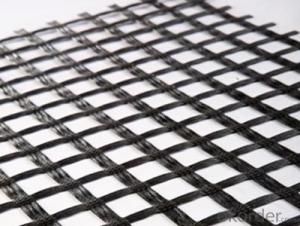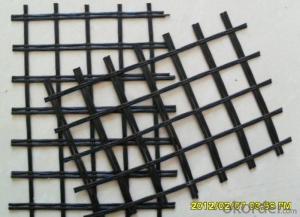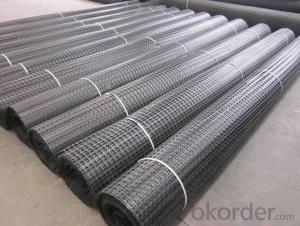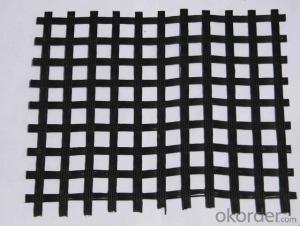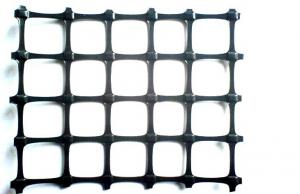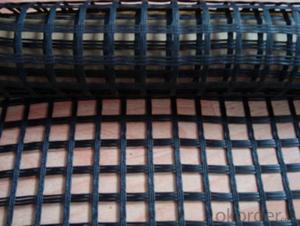50/50Kn/M Warp Knitted Fiberglass Geogrid In China
- Loading Port:
- Qingdao
- Payment Terms:
- TT OR LC
- Min Order Qty:
- 30000 m²
- Supply Capability:
- 500000 m²/month
OKorder Service Pledge
OKorder Financial Service
You Might Also Like
Structure of 50/50Kn/M Warp Knitted Fiberglass Geogrid:
Warp Knitted Fiberglass Geogrid is to select high quality enhanced non-alkali fiberglass yarn,and it uses foreign advanced warp knitting woven to become the base materials.Using the warp knitting oriented structure to make full use of the fabric yam strength and improve its mechanical properties ,so it makes good tensile strength ,tearing strength and resistance to creep properties of modified asphalt,and through high quality coating is handled and become planar finely materials.
Main Features of 50/50Kn/M Warp Knitted Fiberglass Geogrid:
fiberglass geogrid for soil reinforcement
fiberglass geogrid
High intension,high tenacity,high occlusive force with soil or gravel,erosion-resistant,water drainage,light weigth.
Reinforce soft soil roadbed,rib side slope of embankment,enhance isolation,inhibit ground deformation,prevent crack by reflection,incre
High tensile strength, low elongation
High stability
Warp Knitted Fiberglass Geogrid Images

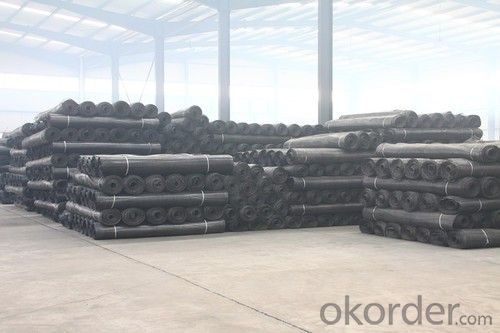
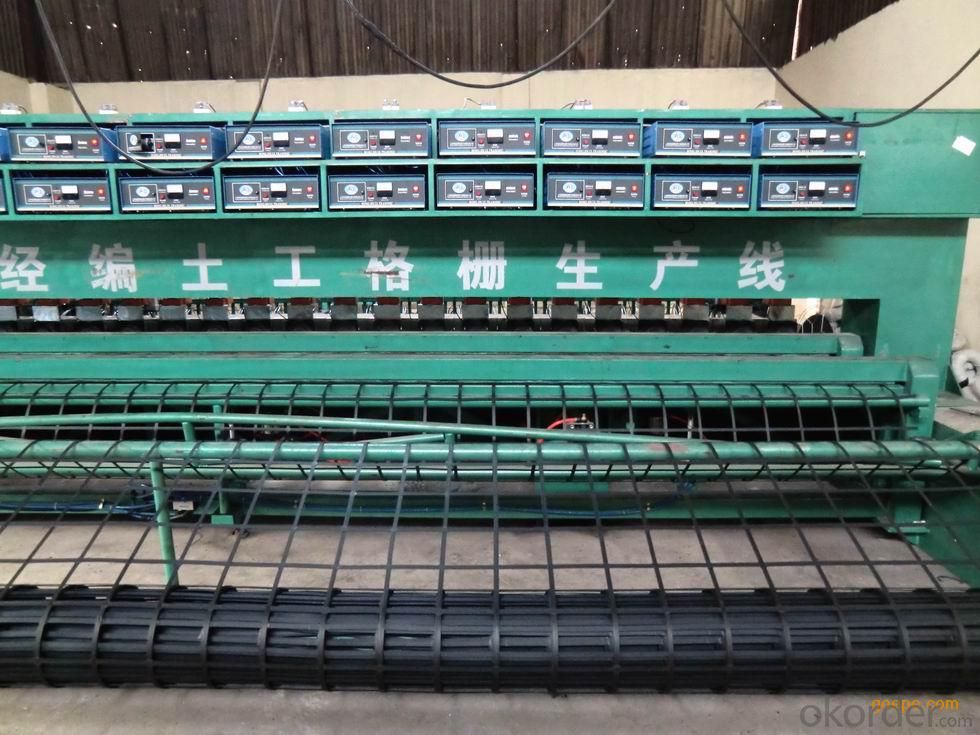
Warp Knitted Fiberglass Geogrid specifiction
Glass Fiber Geogrid GGF80 Technical Specification | |||
Property | Test Method | Unit | Index |
Wide Width Tensile Strength | |||
MD | KN/M | ≥80 | |
CMD | KN/M | ≥80 | |
Elongation At Break | ≤4 | ||
Grid | MM | 25.4×25.4 | |
Width | M | 1~6 | |
Packaging | Details | ||
Roll Dimensions(W×L) | According to customer requirements | ||
Square Meters Per Roll | |||
Estimated Roll Weight | |||
It is widely used in Asphalt wall, railway foundation, dike slope, runway and sand harnessing.
FAQ
We have organized several common questions for our clients,may help you sincerely:
Q: How about your company?
A:Our company are one of the largest geosynthetic products supplier in the world.We have the products experience more than 20 years.Already export to USA/Germeny/Australia/Zambia/Brazil etc.more than 20 countries.Almost 10years.Our products including Geocell/Fiberglass Geogrid/Geomembrane/Geotextile/Geonet etc.
Q.Does your products have good qualitity?
A:Yes,we have do many big projects such as the 2008 Beijing Olympic BIRD NEST. Divert water from the south to the north project. And our products have CE certificate also.
Q:How long can we receive the products after purchase?
A:In the purchase of product within three working days, We will arrange the factory delivery as soon as possible. The pecific time of receiving is related to the state and position of customers.Commonly 15-20 working days can be delivery.
- Q:Can geogrids be used in reinforced earth bridge piers?
- Yes, geogrids can be used in reinforced earth bridge piers. Geogrids are commonly used as reinforcement materials in soil structures, including bridge piers. They help improve the stability and strength of the soil, enabling it to withstand the loads and pressures exerted on the bridge piers.
- Q:Can geogrids be used in retaining walls for residential applications?
- Yes, geogrids can be used in retaining walls for residential applications. Geogrids provide additional reinforcement to the soil, improving stability and preventing potential wall failure. They are commonly used to increase the strength and durability of retaining walls in residential settings, ensuring long-term performance and safety.
- Q:What are the differences between geogrids and geosynthetic clay liners?
- Geogrids and geosynthetic clay liners (GCLs) are both types of geosynthetics used in civil engineering, but they differ in terms of composition, function, and application. Geogrids are typically made of high-strength polymer materials, such as polyester or polypropylene, and are designed to provide reinforcement and stabilization to soil or aggregate layers. They have a grid-like structure with open apertures that allow for soil interlocking, enhancing the load-bearing capacity of the soil. Geogrids are commonly used in applications such as retaining walls, road construction, and erosion control. On the other hand, geosynthetic clay liners (GCLs) consist of a layer of natural sodium bentonite clay sandwiched between two geotextile layers. The clay layer acts as a hydraulic barrier, providing excellent seepage control and preventing the migration of liquids or gases. GCLs are often employed in environmental containment systems, such as landfill liners or caps, and in other applications that require effective containment of fluids. In summary, while geogrids primarily focus on reinforcement and stabilization of soil, geosynthetic clay liners specialize in seepage control and containment. Their differing compositions and functions make them suitable for distinct engineering purposes.
- Q:Can geogrids be used in stabilization of coastal dunes?
- Yes, geogrids can be used in the stabilization of coastal dunes. Geogrids are commonly used for soil reinforcement and erosion control, making them effective in preventing dune erosion and maintaining their stability. By installing geogrids, the dune's natural sand and vegetation can be retained, while preventing sand displacement and erosion caused by wind and waves.
- Q:What are the advantages of using geogrids in flexible pavements?
- Geogrids offer several advantages in flexible pavements. Firstly, they enhance the stability and load-bearing capacity of the pavement by distributing the load more evenly and reducing the stress on the underlying layers. Additionally, geogrids improve the overall durability of the pavement by preventing rutting and cracking caused by traffic and environmental factors. They also help in reducing the thickness of the pavement layers, resulting in cost savings. Moreover, geogrids facilitate faster construction, as they can be easily installed and provide immediate reinforcement. Overall, geogrids enhance the performance and longevity of flexible pavements, making them a preferred choice in road infrastructure projects.
- Q:Are there any specific requirements for geogrid installation in road construction?
- Yes, there are specific requirements for geogrid installation in road construction. Geogrids should be properly placed and secured at the correct depth and orientation to effectively reinforce the soil and distribute the load. They should be installed on a stable and properly prepared base, with adequate overlap and connection strength. Additionally, compacted fill material should be placed and compacted in layers over the geogrid to ensure proper interlocking and load transfer.
- Q:Are geogrids effective in reducing differential settlement?
- Yes, geogrids are effective in reducing differential settlement. Geogrids are engineered materials that provide reinforcement and stabilization to soil. By distributing loads more evenly and improving soil strength, geogrids help mitigate differential settlement, which occurs when different areas of soil settle at different rates.
- Q:Are geogrids effective in preventing soil erosion on slopes without vegetation?
- Yes, geogrids are effective in preventing soil erosion on slopes without vegetation. Geogrids provide reinforcement to the soil, increasing its stability and preventing it from being washed away by water or eroded by wind. They act as a barrier, retaining the soil in place and reducing the risk of erosion, even in the absence of vegetation.
- Q:The difference between polyester glass fiber cloth and glass geogrid
- Fiberglass geogrid, fiberglass geogrid
- Q:Are geogrids effective in stabilizing coastal dunes?
- Yes, geogrids are effective in stabilizing coastal dunes. Geogrids are synthetic materials that are designed to reinforce and stabilize the soil. They can be installed in coastal dunes to help prevent erosion and maintain the stability of the dune system. The geogrids provide additional strength and support to the sand, reducing the risk of dune collapse and erosion caused by wind and water.
1. Manufacturer Overview |
|
|---|---|
| Location | |
| Year Established | |
| Annual Output Value | |
| Main Markets | |
| Company Certifications | |
2. Manufacturer Certificates |
|
|---|---|
| a) Certification Name | |
| Range | |
| Reference | |
| Validity Period | |
3. Manufacturer Capability |
|
|---|---|
| a)Trade Capacity | |
| Nearest Port | |
| Export Percentage | |
| No.of Employees in Trade Department | |
| Language Spoken: | |
| b)Factory Information | |
| Factory Size: | |
| No. of Production Lines | |
| Contract Manufacturing | |
| Product Price Range | |
Send your message to us
50/50Kn/M Warp Knitted Fiberglass Geogrid In China
- Loading Port:
- Qingdao
- Payment Terms:
- TT OR LC
- Min Order Qty:
- 30000 m²
- Supply Capability:
- 500000 m²/month
OKorder Service Pledge
OKorder Financial Service
Similar products
New products
Hot products
Hot Searches
Related keywords
